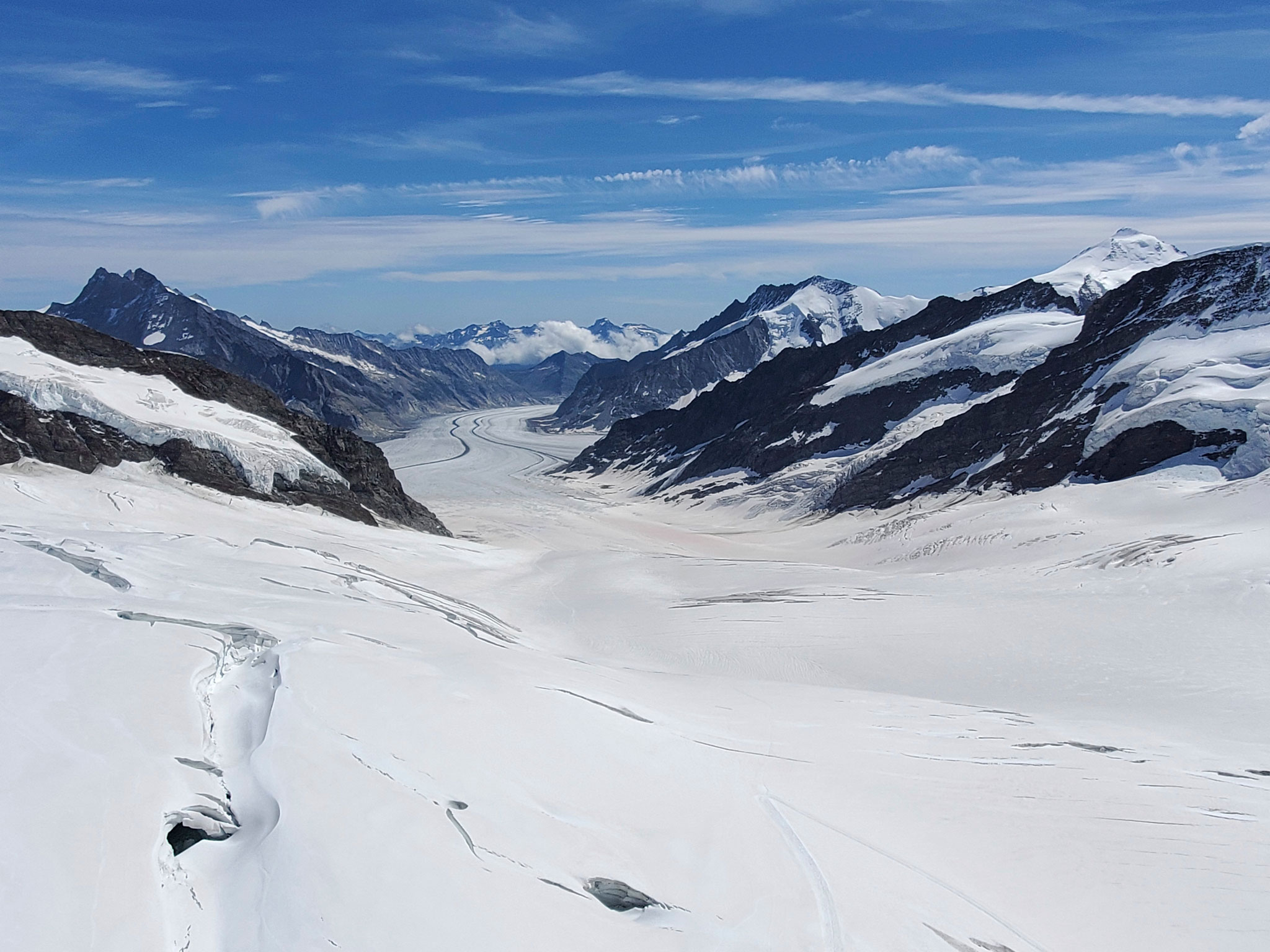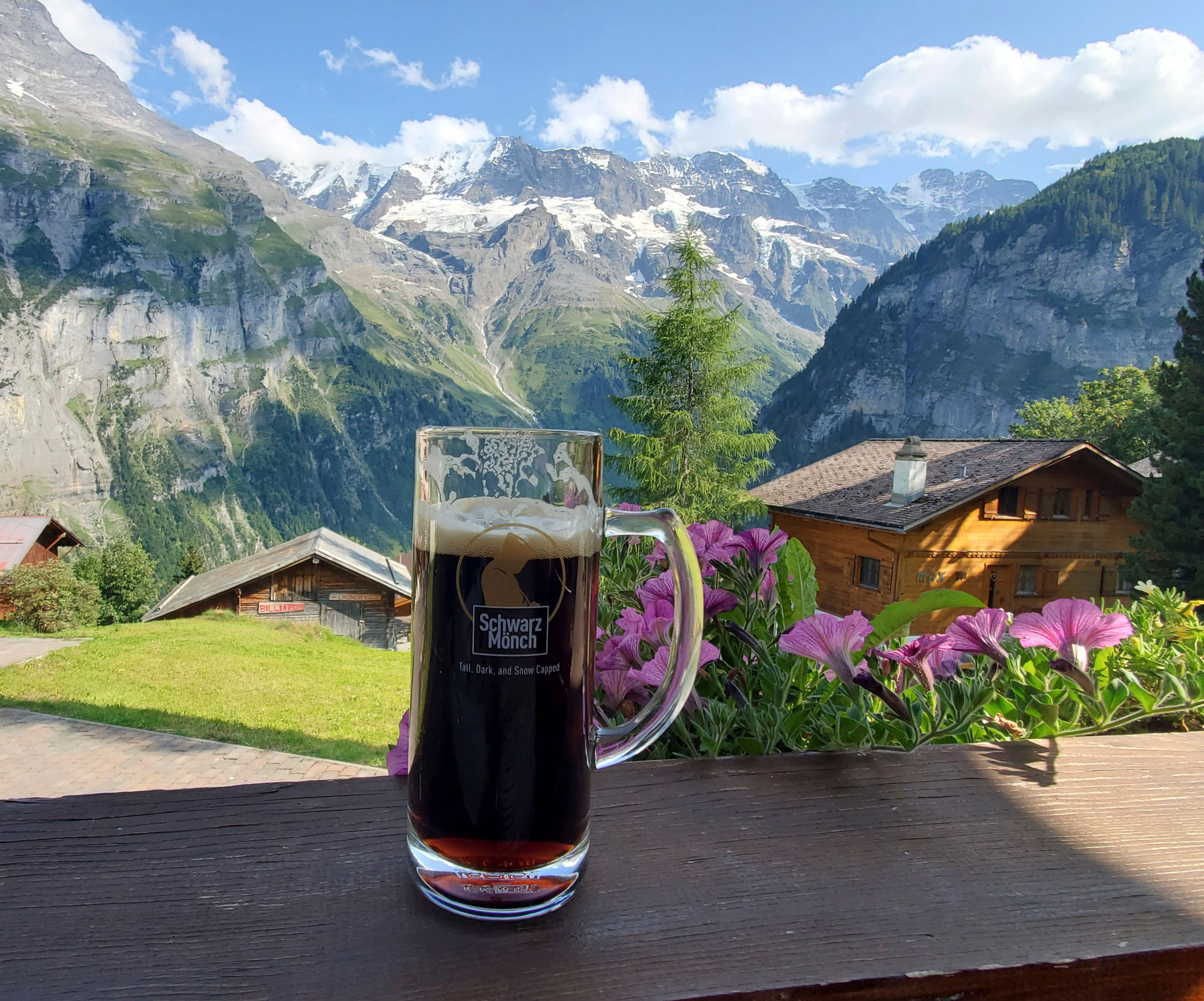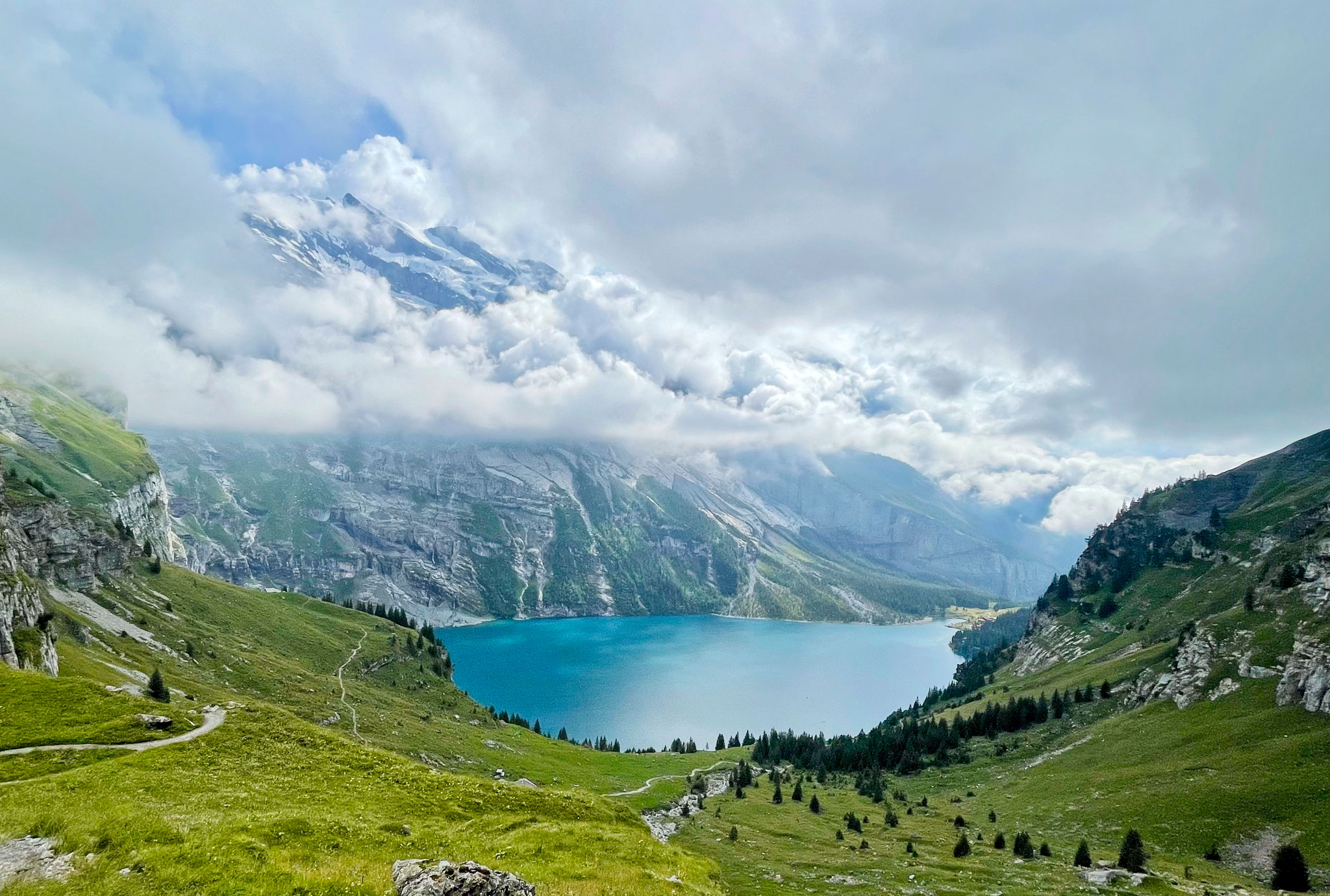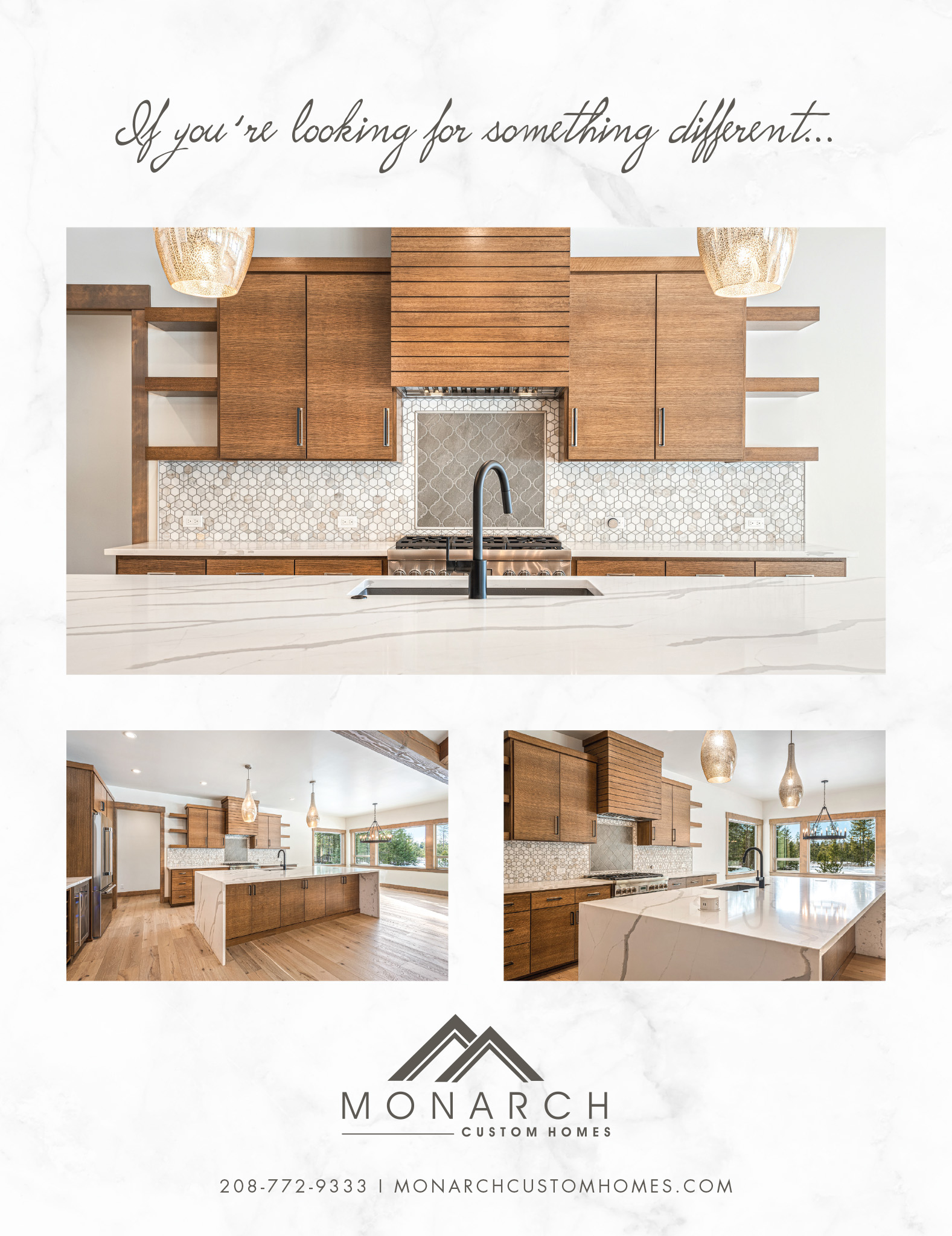I arrived in Grindelwald, the gateway to the Jungfrau region, on a clear day and was greeted by the impressive massifs of the Berner Oberland. I checked into the flower-bedecked inn that has been run by the same family since its inception in 1899.
Next, I rode a cable car up then hiked through meadows, forest and tunnels to an overview of the Oberer Grindelwaldgletscher, or upper Grindelwald Glacier, one of the two valley glaciers near Grindelwald.
My husband arrived on a later flight and joined me in Grindelwald that evening for dinner. We spent the next several days capitalizing on the area’s lifts, cable cars and cogwheel trains to best access the hikes we had our sights on. We chose a bluebird day to ride the cogwheel train to a height of 11,362 feet to the Jungfraujoch, the saddle between the Jungfrau and the Mönch. We basked in the sun on this glorious afternoon as we hiked across the glacier to the Monchsjochhutte, the highest altitude serviced hut in Switzerland at just under 12,000 feet. We savored a delicious bowl of soup and a beer at the hut before trekking back across the glacier to the Jungfraujoch.
The beauty of the Mönch, Eiger,and Jungfrau was breathtaking from this perch at nearly 12,000 feet above sea level. Our eyes followed the path of the Great Aletsch Glacier, a UNESCO World Heritage site and the largest glacier in the Alps. This frozen river carries 10 billion tons of ice from the Mönch, Eiger and Jungfrau to the Valais. It was sobering to see the ablation and how the glacier has shrunk and narrowed dramatically in recent decades.

On our descent from what’s known as the Top of Europe, we stopped at Eigergletscher station to enjoy the walk down to the hamlet of Kleine Scheidegg, where we would rejoin the cogwheel train. As luck would have it, the farmers were calling their cows home to be milked just as we were walking through the pasture. My heart soared as I hiked the last quarter mile or so to Kleine Scheidegg amongst the cows, marching in lockstep with these bovine beauties to the symphony of moos and clanging of cowbells.
The following day we enjoyed a lovely hike to a hut overlooking the Unterergrindelwald Gletscherer. Shortly after we arrived at our hut, a torrential downpour ensued, bringing all the hikers inside the cozy hut. We spent a few hours chatting it up with a climber who was spending a night at this hut before heading to the mountaineers’ base hut for climbing the Schreckhorn. We engaged in lively conversation over espressos before braving the rain to finish our hike.
Story continues after a quick message from our sponsor below.
After hiking the Eiger Trail, directly under the north face of the Eiger, we sipped an après hike Weiss beer in the ski village of Kleine Scheidegg. We sat on the patio next to one of the giant telescopes that tourists have used to gape at the mountaineers attempting to climb the harrowing north face of the Eiger, aka the White Spider, since the first fatal attempt in 1935.
We tackled all of the iconic hikes accessible from the Grindelwald valley, setting out in all directions to enjoy the views of the massifs.
We sent our bags by train to our next hotel, which left us free to hike over to the next valley sans baggage. That morning, we whisked ourselves up to Eigergletscher on the swift and whisper-quiet Eiger Express gondola. We spent the day in the mountains, making our way from under the north face of the Eiger to the town of Wengen, where we enjoyed a cold pilsner and hopped on a bus for a quick ride to Lauterbrunnen, a.k.a. valley of 72 waterfalls.
Lauterbrunnen is a picture-perfect trough-like valley with tall-sided cliffs on both sides and a series of waterfalls careening off the edges of the valley cliffs.

We couldn’t resist having a James Bond experience atop the Schilthorn at 9,744 feet at Piz Gloria, the location of the Bond film, On her Majesty’s Secret Service.
Descending the Schilthorn, we exited the cable car in Mürren and hiked to scenic Gimmelwald. Despite decades of Rick Steves touting Gimmelwald as his favorite place in Europe, this little farming village remains traffic-free and, thanks to the locals, successfully thwarting development by declaring the village an avalanche zone, authentic. We meandered through Gimmelwald, admiring the farmers’ neatly stacked firewood, purchasing jerky and Alp cheese from an honesty box, and finally settled in at the hostel to enjoy the delicious local dark beer, the Swartz Mönch, while gazing directly at the peak the Swartzmönch.
The next stop was Trümmelbach Falls, a series of 10 raging waterfalls within the mountain that solely drains the Eiger, Jungfrau and Mönch’s glaciers. Taking the tunnel-funicular up through the mountain’s rock, we walked down the series of waterfalls that move 20,000 liters of water per second. We beheld the spectacular and thunderous roar of water cascading down through the underground tunnel from the platforms and viewing galleries within the rock.

Our final stop was to the stunning town of Kandersteg, to the southwest, where I easily could have spent another week hiking. If you’ve ever seen a photographic calendar of Switzerland, it surely contained a prominently placed photograph of Kandersteg’s Oeschinensee (See is a lake in German, pronounced Zay). It is the most beautiful mountain lake in the Alps with its dramatic backdrop of rugged peaks and its glacial-fed cerulean water.
Our favorite hike of the trip was
from Oecheninsee to the Bluemlisalphutte above the Hohturli Pass. This 11-mile hike is a genuine humdinger with nearly four thousand feet of gain to the alpine hut at 9,350 feet. We started the walk in a thick fog and made a stop at a small hut above the lake, thinking we might get an espresso. Instead, we bought was available, instant coffee from a sweet woman that made goat cheese. She was proud to show us that she served Nescafe Gold instant coffee, and in that thick mountain fog, it was the best coffee we had ever tasted. Above the clouds at the Hohturli Pass, we had panoramic 360-degree views. From the hut, we looked across at the Bluemlisalp Glacier and massif. We stopped at the same little hut on our descent, this time consuming a cold beer while the woman’s chickens pecked at our hiking boots from underneath the picnic table.
We bagged several more mountain huts while in Kandersteg, returning weary each evening to our apartment in town but not too tired to take in the alphorn concerts in the street.

On our last day in Kandersteg, we finished our hike early enough to ride the little red cable car to Allmenalp. The cable car, one of the steepest in Europe, is self-guided. When you are ready to descend, you push a button to let the attendant at the bottom of the lift know that you need a car sent up. Atop the Allmenalp, we were greeted with a feast for the senses; a panoramic view of the mountains and the valley below, the cacophony of cowbells clanging from the meadow, the smell of freshly cut grass and the mountain air, and the tasty Alp cheese fresh from the cheesemaker’s shop. On the patio of the hut was a large cooler full of drinks chilled by recirculating frigid spring water. We grabbed a cold beer from the icy water and ordered the Bernerbunder, a glorious cheese and meat platter featuring fanciful curls of Alp cheese. The cheesemaker allowed us a visit into his shop to view the giant wheels of cheese aging on the wooden shelves.
We concluded our holiday with a few days in Lucerne, a city of medieval architecture on Lake Lucerne. Staying two nights in the Altstadt, or old town, I enjoyed strolling the cobbled streets and crisscrossing the Chapel Bridge over the Reuss River to thoroughly explore this picturesque and compact city.
If you ever have an opportunity to visit the Berner Oberland in Switzerland, do it!
Cheers! N
By Denise Lundy
Photography By David Ronalds
As Featured In: Winter/Spring 2022




